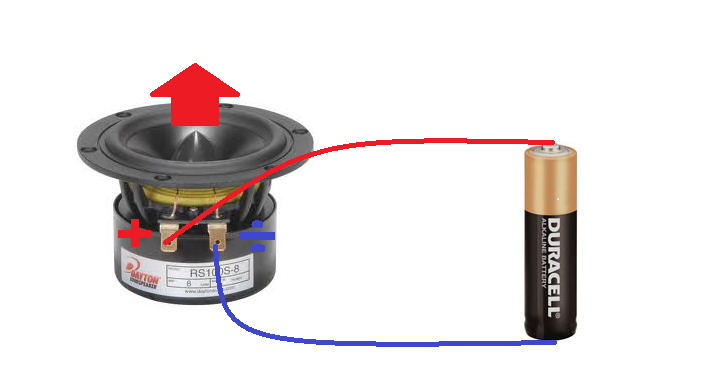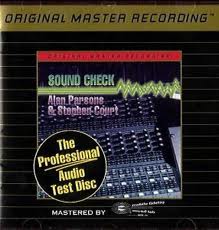|
Polarity
of drivers
|
|
How do we find the polarity of a driver not having any + or - ingraved on the chassis or any red dot at the plus terminal? Vintage drivers, despite markings, may require an extra check, e.g. JBL drivers, where we sometimes can find red for both PLUS or MINUS depending on driver (JBL L100). International standard these days require that when you apply a positive voltage to the PLUS terminal, the cone should move out. TEST Fix two test wires to driver terminals and connect a 1.5 V battery as seen on picture above. Hold the minus wire to the battery minus and connect shortly the red wire to battery PLUS. If the driver cone moves out you have found the PLUS terminal being the one connected to plus on the battery. Ad a piece of red tape to the plus terminal or mark it somehow to make sure you get it right when you solder the crossover wires to the driver terminals. Connecting the drivers correctly is all or nothing in getting the crossover working properly. For a two-way speaker crossed at e.g. 3 kHz it can sometimes be really hard to hear what is correct, where measurements - if drivers are not connected correctly - will display a deep suck-out at point of crossover. The higher in frequency we get, the harder it is to hear phase problems. Swapping gear all too often I regularly have to check phase issues and I use this CD all the time ( - when not using the CLIO system):
"SOUND CHECK is the definitive stereo audio test disc. It contains 92 tracks of practical material compiled as a result of careful research and investigation into the needs of studio engineers, audio technicians, serious audiophiles, record producers and musicians. The disc has been designed not only to help assess the technical performance of a wide range of sound recording and reproduction equipment, but also to offer the very best available musical, vocal and effects sources for experimentation and demonstration." |

